Indian Polity: August 2024 UPSC Current Affairs | Indian Polity for UPSC CSE PDF Download
DNA Profiling in the Justice System

Why in News?
The June 2024 decision by the Madras High Court to overturn a conviction under the Protection of Children from Sexual Offences (POCSO) Act, 2012, has sparked renewed discussions regarding the dependability of DNA profiling in legal matters. The court emphasized the necessity of not depending exclusively on DNA evidence for legal rulings, underscoring the importance of additional corroborative evidence.
What is DNA profiling?
- Overview: DNA profiling, also known as DNA fingerprinting, is a technique that identifies individuals by examining unique regions of their DNA. Although human DNA is 99.9% identical across individuals, the remaining 0.1% contains distinctive sequences termed Short Tandem Repeats (STRs), which are essential for forensic analysis.
- DNA as Genetic Material: DNA serves as the genetic blueprint found in the nucleus of eukaryotic cells (both animal and plant) and in the cytoplasm of prokaryotic cells (like bacteria). It is organized as a double helix comprising 23 pairs of chromosomes that are inherited from both parents, encoding genetic information through sequences made up of four nucleotides: Adenine (A), Guanine (G), Thymine (T), and Cytosine (C).
- Sample Collection: DNA can be extracted from various biological specimens such as blood, saliva, semen, and other bodily fluids. These samples undergo analysis to create a DNA profile. Touch DNA, which is left behind during physical contact, is often present in minimal quantities and may not be ideal for profiling due to contamination risks.
- Focus on Genetic Markers: DNA profiling targets specific regions known as genetic markers, particularly STRs, which vary among individuals, except in the case of monozygotic (identical) twins.
Process of DNA Profiling
- Isolation: This step involves extracting DNA from biological samples collected.
- Purification & Quantification: The DNA is purified to eliminate contaminants, and its concentration is determined.
- Amplification: Selected genetic markers are replicated to produce sufficient DNA for analysis.
- Visualization & Genotyping: This phase focuses on identifying specific sequences in the DNA markers.
- Statistical Analysis & Interpretation: DNA profiles are compared, and the probability of a match is calculated.
- Special Cases: In scenarios involving degraded samples, miniSTRs (smaller DNA fragments) may be utilized as they withstand environmental stress better. Additionally, mitochondrial DNA (mtDNA) is beneficial for tracing maternal lineage when nuclear DNA is inadequate.
How is DNA Profiling Used in Legal Proceedings?
- Matching Process:In forensic cases, DNA profiles from evidence are compared with known samples, leading to three possible outcomes:
- Match: The DNA profiles are indistinguishable, implying a common source.
- Exclusion: The profiles differ, indicating different sources.
- Inconclusive: The data does not yield a clear result.
- Statistical Support: A match does not definitively prove identity; experts provide a "random occurrence ratio" to indicate how often similar profiles might appear in the population.
- Legal Interpretation: The Madras High Court and the Law Commission of India noted that a DNA match does not conclusively establish identity. The 'random occurrence ratio' depends on the population database used and provides probabilistic, not definitive, evidence.
What are the Legal Provisions Regarding DNA Profiling in India?
Legal Framework:- Indian Constitution: Article 20(3) protects individuals from self-incrimination, while Article 21 ensures the right to life and personal liberty against unauthorized interference.
- Code of Criminal Procedure, 1973 (CrPC): Section 53 permits DNA profiling of suspects at the request of the investigating agency, and Section 53A specifically allows for profiling rape suspects.
- Bharatiya Nagarik Suraksha Sanhita (BNSS) 2023: This legislation replaced the CrPC of 1973.
- Indian Evidence Act, 1872: Sections 45-51 address the admissibility of expert testimony, including DNA evidence, in court.
Judicial Precedents:
- Pattu Rajan v. State of T.N. 2019: The Supreme Court acknowledged that the probative value of DNA evidence varies by case, emphasizing that while DNA evidence is reliable, it is not infallible.
- Sharda vs. Dharmpal, 2003: The Supreme Court upheld the authority of marital courts to mandate medical examinations, including DNA profiling, without violating Article 21.
- Das @ Anu v. State of Kerala, 2022: The right against self-incrimination under Article 20(3) applies to testimonial evidence (such as confessions), while DNA, as physical evidence, does not fall under its protection.
- Law Commission Recommendations: The 271st report (2017) by the Indian Law Commission advocated for comprehensive legislation for DNA profiling, resulting in the DNA Technology (Use and Application) Regulation Bill, 2019, was withdrawn in July 2023, leaving India without a dedicated DNA law.
What are the Limitations of DNA Profiling?
- Environmental Stress and Sample Degradation: DNA can be compromised due to environmental factors, leading to incomplete or degraded samples. Techniques such as miniSTRs and mtDNA analysis are employed in such cases but have their own limitations.
- Complexity and Reliability: The DNA profiling process is intricate and requires precise techniques. Issues like contamination and improper handling can undermine the reliability of results.
- Cost: DNA analysis can be expensive, limiting its accessibility in some instances.
- Need for Corroboration: Despite the power of DNA evidence, it should not be considered infallible. Courts must evaluate DNA findings alongside other corroborating or contradictory evidence to deliver fair verdicts.
Way Forward
- Enhancing Accuracy and Reliability: Invest in research to advance DNA profiling methods and address issues related to sample degradation and contamination. Standardize procedures and implement quality control in forensic laboratories.
- Ensuring Fair Legal Practices: Highlight the necessity of corroborating evidence in securing convictions. Develop guidelines for the admissibility and impact of DNA evidence in court to guarantee just outcomes.
- DNA Technology Bill: The DNA Technology Bill, 2019, aims to establish a regulatory framework to prevent misuse and ensure appropriate use of DNA profiling. Revisiting and possibly revising this bill is essential to address privacy concerns and strengthen safeguards.
- Transparency in Legal Processes: Ensure transparency in the collection, analysis, and presentation of DNA evidence in court to maintain public trust.
Mains Question:
Q: What are the potential issues with relying solely on DNA Profiling for convictions, and how can these issues be mitigated to ensure justice in the judicial process?
5th Anniversary of Abrogation of Article 370
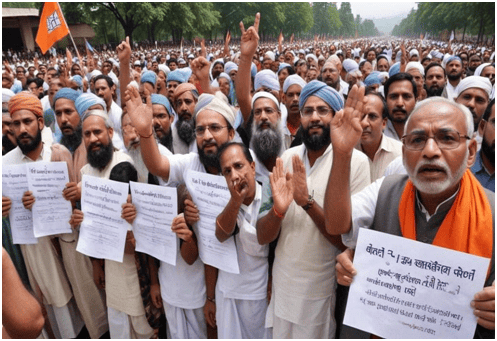
Why in News?
Recently, the fifth anniversary of the revocation of Article 370, which granted special status to Jammu and Kashmir, was observed. On August 2019, the Government of India revoked Article 370.
What was Article 370?
- Article 370 of the Indian Constitution provided special autonomy to Jammu and Kashmir.
- Drafted by N Gopalaswami Ayyangar, a member of the Constituent Assembly, it was included as a 'temporary provision' in 1949.
- This article allowed Jammu and Kashmir to have its own constitution, flag, and autonomy over most matters except defence, foreign affairs, and communications.
- The provision stemmed from the terms of the Instrument of Accession signed by the ruler of Jammu and Kashmir, Hari Singh, in 1947 after a Pakistani invasion.
Repeal of Article 370:
- Presidential Order: The Presidential Order did not "redefine" the Constituent Assembly but modified the interpretation of Article 370 using Article 367, stating that "Constituent Assembly" should be read as "Legislative Assembly.
- By invoking President's rule, Parliament assumed the powers of the Legislative Assembly to revoke Article 370.
- Resolutions in Parliament: Concurrent resolutions were passed by both houses of Parliament, the Lok Sabha and the Rajya Sabha, to revoke the remaining provisions of Article 370 and replace them with new provisions.
- Jammu and Kashmir Reorganisation Act, 2019: This act bifurcated the state into two Union Territories: Jammu and Kashmir, and Ladakh.
- Supreme Court Judgment on Article 370: The Supreme Court did not uphold the abrogation as a policy decision but ruled that Article 370 was temporary and ceased to exist once J&K’s Constituent Assembly was dissolved.
Why was There a Need to Abrogate Article 370?
- Integration and Development: The revocation facilitated better access to resources, infrastructure development, and economic opportunities, aiding integration with the rest of India.
- National Security: Improved control and enhanced security measures by the Indian government bolstered national security and counter-terrorism efforts in the region.
- Ending Discrimination: Equal rights and opportunities were assured for women, Dalits, and other marginalized groups under Indian laws, promoting social justice.
- Legal Uniformity: The abrogation aimed to eliminate legal confusion and disparities by applying uniform laws across India, ensuring equal rights for all citizens.
- Demographic Changes: Encouraging outside investment was viewed as a means to stabilize the region economically and socially, although concerns regarding demographic shifts and property rights were raised.
- Political Stability: The move sought to establish a stable political environment, re-establish democratic processes, and enhance local governance.
What has been the Impact of the Abrogation of Article 370?
- Changes in Domicile Laws: In April 2020, the Centre introduced domicile clauses for J&K, redefining residence and recruitment rules, allowing anyone residing in J&K for 15 years or studying for 7 years and appearing in class 10/12 examinations to obtain a domicile certificate, replacing the previously issued Permanent Resident Certificates.
- Changes in Land Laws: The government amended 14 land laws in J&K, repealing 12, including the Jammu and Kashmir Alienation of Land Act, 1938, and the Big Landed Estates Abolition Act, 1950, which had previously protected land holdings for permanent residents from being alienated by non-permanent residents.
- Proprietary Rights: The J&K government granted proprietary rights to West Pakistan Refugees (WPRs) and individuals displaced during the 1965 India-Pakistan war.
- Bharatiya Nyaya Sanhita (BNS): With the revocation of J&K's special status, all central laws became applicable, and the erstwhile state's constitution became defunct.The Ranbir Penal Code (RPC) was replaced by the IPC in 2019, but the BNS replaced IPC only in 2024.
- State Investigation Agency (SIA): Established in November 2021, the SIA coordinates with the National Investigation Agency (NIA) and other central agencies for effective investigation and prosecution of terrorism-related cases.
- Decline in Violence: Since the abrogation, there has been a notable decline in terrorist activities, local militancy recruitment, and terrorist killings in J&K, with incidents like stone pelting, separatist strikes, and violent protests nearly vanishing in the last five years.
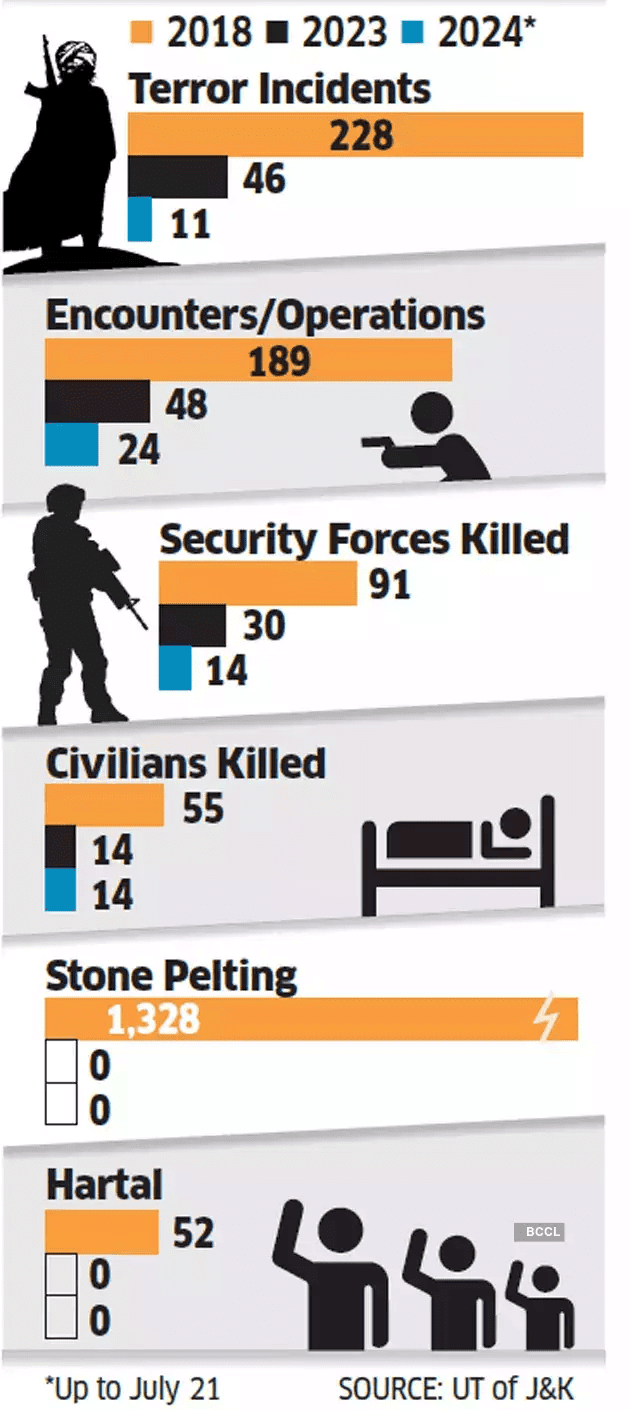
- Electoral Participation: J&K recorded its highest voter turnout in the 2024 Lok Sabha poll in 35 years, with the Kashmir Valley experiencing a 30-point increase from 2019. The 2024 Parliamentary elections were the first major elections in the Union Territory after the abrogation of Article 370.
- Tourism in Jammu and Kashmir: The region experienced an unprecedented surge in tourism, attracting over 21.1 million visitors in 2023, significantly boosting the local economy, especially post-Covid-19 and after the abrogation of Article 370.
- Trade and Investments: Since the abrogation in 2019, J&K attracted Rs 5,656 crore in investments across various sectors, with a new Central Sector Scheme for Industrial Development launched in February 2021, resulting in numerous investments over the years.
- Infrastructure Development: The government has heavily invested in infrastructure projects in Jammu and Kashmir, including the construction of new roads, bridges, tunnels, and power lines, improving travel and business conditions in the region.
What new Challenges have Emerged in J&K and Ladakh after the Abrogation of Article 370?
- Political Instability and Governance Issues: The detention of over 500 political leaders and communication blackouts created a governance vacuum and increased local alienation.
- Security Concerns and Militancy: There has been a resurgence in militant activities leading to heightened security challenges, resulting in increased encounters and civilian casualties. Example: Recent terrorist attacks on an Indian Army convoy and pilgrims highlight the shift towards local militants and modern technology, compounded by weakened local intelligence due to troop redeployments to Eastern Ladakh.
- Socio-Economic Disruption: Prolonged lockdowns led to economic contraction, particularly in tourism, which saw an over 80% decline in 2020, resulting in rising unemployment and youth discontent.
- Human Rights Violations: Numerous cases of detentions, excessive use of force by security, and restricted freedom of expression have led to growing local resentment.
- Administrative Challenges in Ladakh: The bifurcation created administrative issues in Ladakh, with inadequate infrastructure and governance, prompting the Ladakh Autonomous Hill Development Council to demand inclusion under the Sixth Schedule and full statehood for greater autonomy.
- Cultural and Identity Concerns: There are fears of cultural dilution and demographic changes due to inflows of outsiders, with regional parties expressing concerns over land and job security for locals.
Way Forward
- Timeline and Elections: The Supreme Court has suggested holding elections by September 2024, emphasizing the need for a clear timeline and addressing logistical and security challenges to ensure fair elections.
- Security and Human Rights: There is a need to ensure civilian safety, address security concerns, and independently investigate any human rights violations to foster peace.
- Economic and Social Integration: Focus should be on economic development, job creation, and infrastructure improvements, promoting social cohesion and dialogue to address grievances. Embrace Atal Bihari Vajpayee's vision of Kashmiriyat (inclusive culture), Insaniyat (humanitarianism), and Jamhooriyat (democracy) as the foundation for reconciliation efforts in the region.
- Transparency and Trust: Ongoing communication between the central government, state administration, and local populations is essential for maintaining transparency and trust.
- Monitoring and Adaptation: Continuous monitoring of the situation and policy adaptation based on feedback will be crucial for a successful transition.
Mains Question:
Q: Evaluate the implications of the abrogation of Article 370 on Jammu and Kashmir's socio-political landscape. Discuss progress over the past five years, and identify the remaining challenges for lasting peace and integration.
Proposed Amendments in Waqf Act 1995
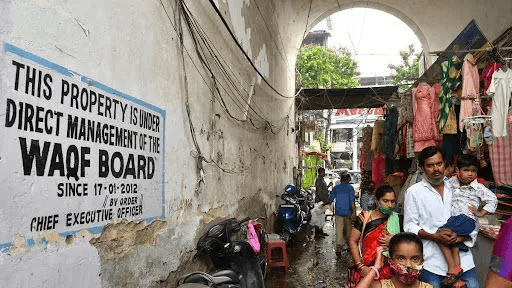
Why in news?
The Union government has introduced the Waqf Amendment Bill to amend the Waqf Act of 1995, which has been referred to a Joint Parliamentary Committee due to opposition from various political parties.
What is Waqf?
- A waqf is a property dedicated to God for religious or charitable purposes.
- It can include both movable and immovable assets intended for public benefit.
- Establishing a waqf is viewed as an act of devotion, allowing Muslims to contribute charitably beyond their lifetime.
- A waqf may be formally created through a deed or recognized based on long-term religious or charitable use.
- Income from waqf properties is typically used to maintain mosques, fund educational institutions, or assist the needy.
- Once a property is designated as a waqf, it cannot be inherited, sold, or transferred.
- Non-Muslims can also establish a waqf if the purpose adheres to Islamic principles.
Regulation of Waqf in India
- Waqf properties in India are governed by the Waqf Act of 1995.
- A state survey is conducted to identify and document waqf properties.
- A survey commissioner is appointed to investigate, gather testimonies, and review documents to identify waqf assets.
- Identified properties are officially recorded in the State's gazette, and a list is maintained by the State Waqf Board.
- Each waqf is managed by a mutawalli, or custodian, responsible for its administration.
- Waqfs differ from trusts under the Indian Trusts Act of 1882 as they cannot be dissolved by a governing board.
State Waqf Boards
- The Waqf Act of 1995 establishes State Waqf Boards to manage waqf properties within their jurisdiction.
- These Boards are legal entities that can engage in legal actions.
- Each Board is led by a chairperson and consists of government representatives, Muslim legislators, Islamic scholars, and mutawallis.
- A full-time Chief Executive Officer (CEO) must be appointed for each Board, who must be a Muslim with at least Deputy Secretary rank.
Powers & Responsibilities
- The Waqf Board manages waqf properties and can recover lost assets.
- Approval from two-thirds of the Board members is needed to transfer immovable waqf property through sale, gift, mortgage, or lease.
- Amendments to the Waqf Act in 2013 made it nearly impossible to sell waqf properties without stringent conditions.
Central Waqf Council
- The Central Waqf Council is established as a national advisory body under the Ministry of Minority Affairs.
- It is headed by the Union Minister of Minority Affairs and aims for uniform administration of waqf properties across India.
- The Council advises the Union government on waqf-related policies and resolves inter-State disputes.
Key Changes Proposed in the Amendment Bill
- The proposed amendments aim to reform the law by increasing the Centre’s regulatory authority over waqf properties.
- For the first time, the inclusion of non-Muslim members in Waqf Boards is permitted.
- New definitions include that only lawful property owners who have practiced Islam for a minimum of five years can create waqfs through formal deeds.
- The concept of ‘waqf by use’ has been abolished, meaning properties can no longer be deemed waqf based solely on usage.
- Government properties cannot be recognized as waqf.
- Provisions for widows, divorced women, and orphans to benefit from waqf proceeds are included.
Role of District Collectors
- District collectors will now survey waqf properties, replacing survey commissioners.
- A centralized registration system for waqf properties will be established, requiring details to be uploaded within six months of the law's enactment.
- New waqf properties must be registered through this system, and the district collector will have the final authority on waqf status.
Inclusion of Non-Muslims
- Non-Muslims can now participate in key waqf institutions, including the Central Waqf Council, State Waqf Boards, and waqf tribunals.
- The Central Waqf Council will include three Members of Parliament, who do not necessarily need to be Muslim.
- State Waqf Boards must now consist of two non-Muslim and two women members.
- Waqf tribunals will be reduced to a two-member body, comprising a district judge and a State government officer, with a six-month timeframe to resolve disputes.
Financial Oversight
- The Centre has the authority to order audits of waqf properties by auditors appointed by the Comptroller and Auditor-General of India.
- Waqf Boards are required to conduct annual audits using auditors from a State government panel.
- Penalties will be imposed on mutawallis who fail to maintain proper financial records.
Judicial Review
- Courts can now intervene in waqf disputes, allowing appeals directly to the High Court, thus increasing judicial oversight over waqf decisions.
Power of LG to Nominate MCD Aldermen
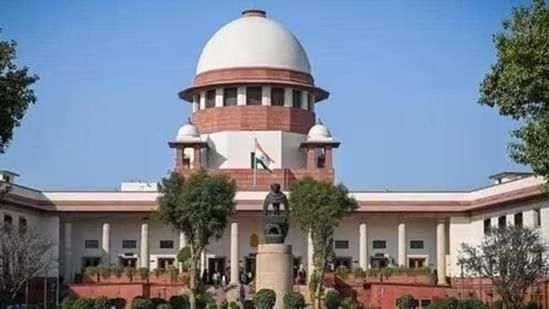
Why in news?
The Supreme Court has determined that the Delhi Lieutenant Governor (L-G), appointed by the Centre, possesses the authority to nominate 'aldermen' to the Municipal Corporation of Delhi (MCD) independently, without requiring the aid and advice of the Delhi Government's Council of Ministers.
Background of The Case
- The Delhi L-G nominated 10 aldermen in 2023 under Section 3 of the Delhi Municipal Corporation Act, 1957 (DMC Act).
- This nomination faced legal opposition from the Delhi government, which filed a plea in the Supreme Court in March 2023, aiming to annul the notifications.
Argument
Powers under Article 239AA
- The Delhi Government contended that the notifications were unlawful, asserting that the Delhi L-G could only make nominations with the aid and advice of the Council of Ministers, as stipulated by Article 239AA of the Constitution of India
State (NCT of Delhi) v. Union of India 2018:
- In this ruling, the Supreme Court stated that the Delhi L-G must follow the aid and advice of the Council of Ministers regarding matters under the State and Concurrent lists, with certain exceptions.
- The Delhi government highlighted that 'Local Government' is a subject within the State List (Entry 5).
DMC ACT 1957
- The Delhi L-G contended that the DMC Act outlines a specific role for the 'Administrator,' granting him the power to nominate aldermen without needing the Council of Ministers' assistance.
Supreme Court Ruling
- The Court declared that the January 2023 nomination of 10 aldermen was a legitimate use of power, affirming that the DMC Act provides the L-G with explicit authority to nominate aldermen without consulting the Council of Ministers.
- The ruling referenced a five-judge bench decision from Government of NCT of Delhi v. Union of India (2023), which established that Parliament can legislate over subjects in the State List concerning the NCT of Delhi.
- This included the ability to legislate on 'local government,' which encompasses the DMC Act.
About Aldermen
- Alderman is a term for a member of a city council or municipal body, originating from Old English.
- The Delhi L-G is authorized under Section 3 of the DMC Act to nominate 10 aldermen, who must be over 25 years old and possess special knowledge or experience in municipal administration.
- Aldermen are integral to the functioning of the house through the Ward Committee.
DMC Act
- Delhi is segmented into 12 zones, with the DMC Act establishing a 'Wards Committee' for each zone, consisting of elected representatives and aldermen.
Functions
Voting Power
- Aldermen do not have voting rights in MCD meetings but can vote in the MCD Standing Committee's first meeting to elect a committee member.
- Each Wards Committee must elect a member for the MCD Standing Committee during its initial meeting.
- The remaining six Standing Committee members are selected directly by the MCD house after mayoral elections.
- Aldermen can also run for election as members of the Standing Committee.
Importance
- Aldermen hold significant influence and are essential in the elections of Standing Committees, MCD in-house, and ward committee meetings.
- The MCD’s Standing Committee cannot be formed without the participation of aldermen in the voting process.
- The Standing Committee is responsible for crucial functions, including entering contracts exceeding Rs. 5 crore, appointing key MCD officers, recommending budget changes, and approving any significant expenditure.
Right to be Forgotten

Why in News?
The Supreme Court of India has agreed to hear a significant case that could define the "right to be forgotten" in the country. This case involves an online legal repository, Indian Kanoon, challenging a Madras High Court order that directed the removal of a conviction judgment after it was overturned. The outcome of this case is likely to influence how personal information can be managed online in India.
What is the Right to be Forgotten?
- The right to be forgotten allows individuals to request the removal of their publicly available personal information from the internet, databases, and search engines.
- This right can be invoked when the information is deemed no longer necessary or relevant, and its presence infringes on an individual's privacy.
- In the European Union, this right is recognized as the "right to erasure" and has been upheld by various courts across Europe.
How is the 'Right to be Forgotten' Interpreted in India?
- Currently, India lacks a formal statutory framework for the right to be forgotten.
- However, the Personal Data Protection Bill of 2019 and various court rulings have recognized this right.
- The Personal Data Protection (PDP) Bill 2019 grants individuals the ability to restrict the dissemination of their personal data in certain circumstances:The data has fulfilled its intended purpose.
- The individual has withdrawn their consent for its use.
- The data was collected in violation of the PDP Bill or existing laws.
- The Supreme Court's ruling in the KS Puttaswamy case acknowledged that individuals have control over their personal lives, including their online presence.
Various High Courts have also supported the notion that the right to be forgotten is a component of the right to privacy:
- The Delhi High Court recognized the right to be forgotten as part of the broader right to privacy in 2019.
- In 2021, the Delhi High Court ruled in favor of an acquitted law student, ordering the removal of search results related to his previous conviction.
- The Orissa High Court noted the complexities and technological challenges surrounding this right in 2020.
Questions to be Addressed by the SC in the 'Right to be Forgotten' Case
The Supreme Court must determine whether the right to be forgotten constitutes a fundamental right and how it relates to other constitutional rights.Two key questions for the Court include:
- Can an individual demand the removal of online content related to their previous conviction after it has been overturned by a higher court?
- Does a higher court have the authority to instruct a web portal to delete prior conviction records to uphold the individual's right to be forgotten?
Q.1. How the Supreme Court of India significantly expanded citizens' fundamental rights?
Ans: The Supreme Court has broadened the interpretation of fundamental rights, especially regarding Article 21, which now encompasses various civil and political rights not explicitly mentioned in the Constitution.
Q.2. What is the General Data Protection Regulation (GDPR)?
Ans: The GDPR is a regulation in the European Union focused on data privacy rights for individuals within the EU and the European Economic Area. It outlines the rights of individuals regarding their personal data, including rights to access, rectify, and erase their data.
Judicial Audit of Law
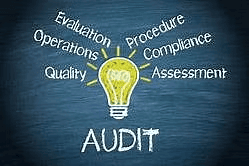
Why in news?
Recently, the Supreme Court of India confirmed the judiciary's right to instruct the government to carry out a "performance audit" of its statutory laws. This decision arose from an appeal related to an Act aimed at slum area development in Maharashtra, raising concerns about the law's effectiveness in enhancing the living conditions for its intended beneficiaries.
- The Supreme Court ordered the Bombay High Court to perform a performance audit of the Maharashtra Slum Areas (Improvement, Clearance and Redevelopment) Act, 1971, due to a significant backlog of over 1,600 pending cases associated with the Act.
- The Court pointed out that although the Act's goal is to provide housing and dignity to marginalized individuals, its execution has resulted in extensive litigation, undermining its intended objectives.
- It emphasized that the judiciary has both the authority and responsibility to ensure that laws are effective, and if a law fails to benefit its intended recipients, a performance audit is justified. Additionally, the Court highlighted the importance of "institutional memory" in assessing the long-term impact of legislation.
The Court's ruling has several implications, including
- Judicial Activism: This ruling signifies a shift towards a more proactive role for the judiciary in governance, allowing it to facilitate justice when bureaucratic delays impede the enforcement of statutory provisions. This could establish a precedent for similar audits of other welfare laws and initiatives.
- Performance Audit: The performance audit seeks to assess the efficacy of the Act and pinpoint systemic issues that lead to litigation. This could result in essential reforms that enhance the law's effectiveness in achieving its goals. The fear of a performance audit may encourage legislatures to examine laws more thoroughly before and during their enactment to rectify inconsistencies and shortcomings.
- Legislature and Executive Accountability: The ruling reinforces the constitutional obligation of the legislature and executive to formulate, monitor, and evaluate the impact of legislation. This may result in heightened accountability and responsiveness from government authorities in enforcing welfare laws.
- Focus on Marginalized Communities: The Court's emphasis on the law's aim to benefit marginalized groups underscores the necessity for policies that truly address their needs. This could inspire further legal and policy initiatives aimed at safeguarding vulnerable populations. The Supreme Court's comments on the Act may lead to significant reforms, establishing a better framework for slum redevelopment and improving living conditions for affected communities.
Several reasons contribute to the legislature enacting ineffective laws
- Complexity of Issues: India’s diverse population and interconnected social, economic, and environmental challenges complicate the drafting of universally effective laws.
- Lack of Research and Data: Many laws are enacted without adequate empirical evidence or comprehensive impact assessments, resulting in ineffective solutions. For instance, the lack of thorough examination by the Joint Parliamentary Committee (JPC) regarding the three farm laws passed in Parliament limited opportunities for detailed scrutiny and public feedback.
- Political Pressures: Partisan politics and short-term electoral considerations can overshadow the public interest, leading to poorly designed legislation.
- Bureaucratic Challenges: Resistance to change and limited resources within the bureaucracy can obstruct the implementation and enforcement of new laws.
- Inadequate Stakeholder Consultation: Insufficient engagement with civil society and marginalized communities can result in laws that do not effectively address real needs. For example, the Forest Rights Act (FRA) of 2006 aims to protect the rights of indigenous and tribal communities over forest land and resources; however, its implementation has faced challenges due to inadequate consultation with local communities, which has hindered the effective recognition of their rights.
- Overlapping Jurisdictions: Conflicting laws and jurisdictional disputes can create confusion and inefficiencies in enforcement. For instance, land acquisition laws at both central and state levels can lead to conflicts regarding land use and compensation practices.
- Drafting Quality: Ambiguous language and technical complexity in laws can result in misinterpretation and limited public understanding. For example, the POCSO Act strictly criminalizes the possession and storage of child pornography to protect children from sexual abuse, while the IPC only addresses the creation and distribution of obscene materials, creating a gap in addressing possession and storage.
To move forward effectively, several strategies are recommended
- Enhanced Stakeholder Engagement: Involve civil society, experts, and affected communities in the lawmaking process to ensure that laws are practical and effective. For instance, the UK's Citizen Space platform facilitates public consultation on proposed legislation, ensuring diverse voices are heard. A similar initiative in India could lead to laws that better reflect the needs of the populace.
- Data-Driven Legislation: Invest in research and data collection to inform policy decisions, ensuring that laws address root causes and are based on empirical evidence.
- Streamlined Bureaucratic Processes: Reduce bureaucratic delays by simplifying administrative procedures and ensuring timely rule-making to enhance effective law implementation.
- Clear Drafting Standards: Establish guidelines for clear and unambiguous drafting of laws to minimize misinterpretation and ensure consistent enforcement. The Plain Language Commission in the UK promotes clear and concise legal writing; India could benefit from similar guidelines to improve the readability of its laws.
- Robust Monitoring and Evaluation: Implement comprehensive mechanisms to assess the effectiveness of laws post-enactment, allowing for necessary adjustments and improvements. Australia's Regulatory Impact Analysis (RIA) system is designed to evaluate the potential costs and benefits of proposed regulations prior to their implementation, ensuring that the regulations are both efficient and effective.
Mains Question
Q: Discuss the concept of judicial audit of law in the context of ensuring accountability and transparency in the legislative process.
Supreme Court of India allows Sub-Classification of Reserved Categories
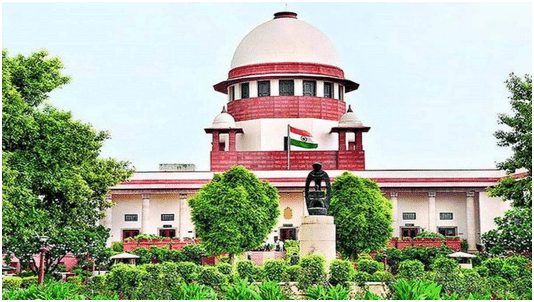
Why in news?
On August 2, 2024, a seven-judge Constitution Bench of the Supreme Court issued a landmark 6-1 majority ruling declaring that Scheduled Castes (SCs) and Scheduled Tribes (STs) do not constitute a socially uniform group. The court affirmed that states have the right to sub-classify SCs and STs to extend reservations to the more disadvantaged segments within these groups. This decision aims to ensure that reservation benefits reach SC/ST communities that are historically marginalized and less privileged.
Background of the Case
- The Supreme Court's decision is rooted in Article 341 of the Constitution, which allows the President to designate certain castes, races, or tribes as SCs through public notification.
- SCs collectively receive a 15% reservation in education and public employment.
- Over the past three decades, several states, including Punjab, Bihar, and Tamil Nadu, have attempted to implement laws for sub-classifying SCs.
- In 1975, Punjab divided its 25% SC reservation into two categories.
- In 2000, Andhra Pradesh introduced a similar classification, which was later invalidated by a Supreme Court ruling.
- The Supreme Court had previously addressed this issue in the E.V. Chinnaiah vs. State of Andhra Pradesh (2004) case, ruling that once a community is listed as SC, it forms a single class for reservation purposes.
- In 2020, the court reaffirmed the potential for sub-classification in a case involving Davinder Singh.
Key Highlights of the Judgement
- The current ruling asserts that inclusion in the Presidential list does not imply a uniform class that cannot be further classified.
- Chief Justice Chandrachud described the Presidential list as a "legal fiction," acknowledging internal differences among SCs.
- States may utilize Articles 15(4) and 16(4) to create special provisions for SCs, considering varying degrees of disadvantage.
- Justice Gavai emphasized that equality of opportunity must account for the different social standings of SC communities.
Possible Implications of this Judgement
- The ruling is expected to facilitate states like Punjab, Bihar, and Tamil Nadu in implementing separate reservations for SC/ST categories.
- Prime Minister Modi's previous commitment to consider SC sub-categorisation may have contributed to this ruling.
- The decision may also bolster calls for a caste census to better understand the distribution of different groups in the reservation framework.
Understanding Article 341
- Article 341 empowers the President to specify the SCs in states and union territories via public notification, with changes to this list restricted to Parliament.
The Creamy Layer Concept
- The "Creamy Layer" refers to wealthier individuals within reserved categories who are excluded from certain affirmative action benefits to ensure that support reaches those in greater need.
- Justice Gavai's opinion on implementing this principle for SCs was supported by four other judges.
Dissenting Opinion
- Justice Trivedi dissented, arguing that states lack the authority to modify the Presidential list under Article 341, suggesting that such changes could undermine the purpose of the affirmative action mandated by the Constitution.
Conclusion
- This verdict opens the door for states to tailor reservations to address varied levels of disadvantage among SC communities, promoting equitable representation and support.
Trends in Special Needs Adoptions in India

Since 2019, out of 18,179 total adoptions, only 1,404 have been children with special needs, despite overall adoption numbers increasing over the past five years. Activists have highlighted that, although more children with special needs are available for adoption, the actual rate of adoption for these children remains markedly low.
Understanding Adoption: Legal and Practical Aspects in India
Definition of Adoption
- Adoption is a legal process that permanently separates a child from their biological parents and integrates them into a new family, granting them all the associated rights and responsibilities.
Legal Framework for Adoption in India
Governing Laws
- The Hindu Adoption and Maintenance Act, 1956 (HAMA)
- The Juvenile Justice (Care and Protection of Children) Act, 2015
- Juvenile Justice Model Rules, 2016
- Adoption Regulations, 2017
Core Principles
- The child's best interests are always the priority.
- Adoption placements should aim for socio-cultural congruity, facilitating integration into similar cultural environments.
Centralized Agency
- The Central Adoption Resource Authority (CARA) is responsible for overseeing all adoptions in India, maintaining a centralized database for children and prospective adoptive parents through the Child Adoption Resource Information and Guidance System (CARINGS).
Eligibility for Adoption
Who Can Be Adopted
- Orphans, abandoned, or surrendered children who have been legally declared free for adoption.
- Children from relatives or those of a spouse from a prior marriage, including those surrendered by biological parents.
Adopter Criteria
- Any individual, regardless of marital status, can adopt if they are physically, mentally, and financially stable without any life-threatening medical issues.
- Couples must demonstrate a stable marital relationship for at least two years with mutual consent.
- Single women may adopt children of any gender; however, single men are restricted from adopting girl children.
- There should be a minimum age difference of 25 years between the child and adoptive parent(s).
- Families with three or more biological children can adopt only if they choose children with special needs or those hard to place.
About the Central Adoption Resource Authority (CARA)
CARA operates as a statutory body under the Ministry of Women & Child Development, Government of India.
Role as Central Authority
- CARA is designated as the Central Authority for managing inter-country adoptions in accordance with the Hague Convention on Inter-country Adoption, which India ratified in 2003.
Functions
- CARA serves as the nodal body regulating the adoption of orphaned, surrendered, and abandoned children in India.
- It monitors and regulates various entities, including State Adoption Resource Agencies (SARAs), Specialized Adoption Agencies (SAAs), Authorized Foreign Adoption Agencies (AFAAs), Child Welfare Committees (CWCs), and District Child Protective Units (DPUs).
Legal Framework in India
- Child placement with families is governed by several laws, including the Hindu Adoption and Maintenance Act, 1956, the Guardians and Wards Act, 1890, and the Juvenile Justice Act, 2000.
- The Juvenile Justice (Care and Protection of Children) Act, 2015 mandates the registration of Child Care Institutions (CCIs) and their linkage to CARA.
Hague Convention on Inter-country Adoption
- This Convention aims to establish safeguards for children and families involved in inter-country adoptions.
- Its objectives include preventing illegal abduction, sale, or trafficking of children during the adoption process.
Loving and Stable Family Environment
- Adoption offers children without parental care a loving and stable home.
Holistic Development and Well-being
- Adoption supports the overall development and well-being of adopted children, addressing their physical, mental, emotional, social, and educational needs.
Social and Economic Contribution
- Adoption contributes positively to the social and economic development of the country by:
- Alleviating the burden on the state and society in caring for orphaned, abandoned, or surrendered children.
- Empowering adopted children to grow into productive and responsible citizens.
Positive Adoption Culture
- Fosters a positive culture around adoption by:
- Challenging social stigmas associated with adoption.
- Increasing awareness of the benefits of adoption.
Empowerment of Children
- Adoption empowers children by providing opportunities for education and growth, leading to a brighter future.
Family and Community Support
- Strengthens community ties by encouraging support networks around adopted children.
Diversity and Inclusion
- Promotes diversity by forming families that embrace children from various backgrounds and cultures.
Fulfillment of Parental Desires
- Allows prospective parents to realize their dreams of parenthood, positively impacting their lives.
Humanitarian and Compassionate Act
- Represents a compassionate act, exemplifying the potential for positive change through care and kindness.
Lifetime Bonds and Relationships
- Fosters lasting bonds between adoptive parents and children, nurturing love, support, and belonging.
Challenges in Adoption Process in India
Low Adoption Rates
- Despite a significant number of orphaned and abandoned children in Child Care Institutions (CCIs), actual adoption rates remain low due to the few children legally cleared for adoption.
Procedural Challenges
- Prospective parents often endure long waiting periods and emotional strain due to limited communication from CARA, leading to frustration.
- Numerous legal steps and procedural delays hinder the entry of children in CCIs into the adoption pool.
Societal and Cultural Hurdles
- While traditional resistance based on caste, class, or genetics is diminishing, it still poses challenges to adoption acceptance.
Special Needs and Older Children
- There is considerable reluctance to adopt older children, siblings, or those with disabilities in India, although these groups are often more accepted by foreign adoptive parents.
First Information Report
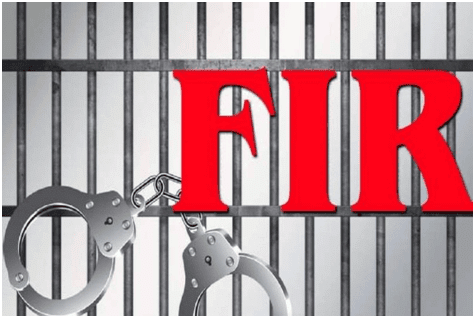
Why in news?
The Supreme Court (SC) of India, in the case of Shailesh Kumar v. State of UP (now State of Uttarakhand) 2024, has clarified the legal requirements surrounding the registration of First Information Reports (FIRs) by law enforcement. The court has determined that any information indicating the occurrence of a cognizable offence must be recorded as an FIR in the official FIR register, rather than being noted in the General Diary maintained by the police in accordance with the Police Act of 1861. The ruling stresses that a General Diary entry cannot be made prior to the registration of an FIR unless there is a need for a preliminary inquiry
- An FIR, or First Information Report, is a formal document created by police when they receive reports of a cognizable offence.
- A cognizable offence is one for which police can make an arrest without a warrant.
- The term FIR is not defined in the Indian Penal Code (IPC) or the Code of Criminal Procedure (CrPC), but it is recognized under Section 154 of the CrPC.
- The Supreme Court ruling in Lalita Kumari v. Government of Uttar Pradesh & Others (2014) established that FIR registration is mandatory for cognizable offences as per Section 154 of the CrPC.
- Exceptions to the FIR registration rule include cases involving:
- Matrimonial or family disputes
- Commercial offences
- Medical negligence
- Corruption cases
- Situations with significant delays in reporting, such as over three months without a valid reason.
- The preliminary inquiry must be completed within seven days.
- If the information does not indicate a cognizable offence, police are not obligated to register an FIR and may simply record the information in the General Diary.
What is a General Diary?
- A General Diary is a log that captures all activities and events occurring at a police station on a daily basis.
- Section 44 of the Police Act of 1861 allows the State Government to determine how the General Diary should be formatted and maintained.
- It includes details such as:
- Arrival and departure times of police personnel
- Arrests made
- Seizures of property
- Complaints received and their resolutions
- Any other relevant information deemed necessary by the officer in charge.
- Supreme Court Rulings: In the case of CBI v. Tapan Kumar Singh (2003), the Supreme Court ruled that a General Diary entry may serve as an FIR if it reveals the commission of a cognizable offence.
| Aspect | Purpose |
|---|---|
| Record Type | To document complaints and incidents for administrative purposes or future reference |
| Nature of Offence | Applicable to both cognizable and non-cognizable offences |
| Documentation | Internal police record |
| Distribution | Copies not given to complainants; sent to superior officers |
| Judicial Oversight | Magistrate may inspect the General Diary upon request |
| Complainant's Signature Required | Not necessary |
Allowing Sub-Quotas to Scheduled Castes
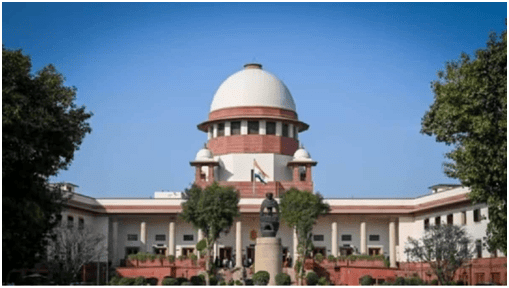
Why in News?
The Supreme Court of India has made a significant ruling that permits states to sub-classify reserved category groups, such as Scheduled Castes (SCs) and Scheduled Tribes (STs), for reservations. This landmark decision was delivered with a 6-1 majority, overturning the previous 2004 judgment in E.V. Chinnaiah vs. State of Andhra Pradesh. This ruling fundamentally changes the landscape of reservation policies in India.
What was the SC’s Verdict on Sub-Classifications of SCs and STs?
Sub-Classifications Permitted: The Court's ruling allows states to sub-classify SCs and STs based on their varying levels of backwardness.
- The seven-judge Bench determined that states can sub-classify SCs within the 15% reservation quota to better support the most disadvantaged groups.
- Chief Justice emphasized the distinction between "sub-classification" and "sub-categorization," warning against misusing these classifications for political gain rather than true upliftment.
- The Court mandated that sub-classifications must be supported by empirical data and historical evidence of systemic discrimination, rather than arbitrary or politically motivated reasons.
- It was clarified that 100% reservation for any sub-class is not allowed.
- State decisions on sub-classification will be subject to judicial review to prevent misuse for political ends.
- The ruling extends the 'creamy layer' principle, previously applicable only to Other Backward Classes (OBCs), to SCs and STs, meaning that states must identify and exclude the more advantaged individuals within these groups from reservation benefits.
- The judgment aims for a more nuanced approach to reservations, ensuring that benefits reach those who are genuinely disadvantaged.
- Reservations should only apply to the first generation; if any family member has availed of reservations and achieved a higher status, subsequent generations will not be eligible for such benefits.
- Rationale for the Verdict: The Court acknowledged that systemic discrimination hinders advancement for some members of SCs and STs, thus sub-classification under Article 14 of the Constitution can help address these inequalities.
- This approach allows states to tailor their reservation policies to more effectively support the most disadvantaged within these communities.
What led to the Reference of the Sub-Classification Issue?
- The issue was referred to a seven-judge bench by a five-judge bench in the case of State of Punjab v. Davinder Singh, 2020.
- Reconsideration of the EV Chinniah Judgment: The five-judge bench found it necessary to reassess the EV Chinniah ruling, which stated that sub-classification within SCs was not allowed due to their classification as a homogeneous group.
- The Punjab Scheduled Caste and Backward Classes (Reservation in Services) Act, 2006 challenged the validity of a provision that specified that 50% of vacancies reserved for SCs must be filled by specific groups based on availability.
- A division bench of the Punjab and Haryana High Court struck down this provision in 2010, relying on the EV Chinniah judgment that held all castes under the Presidential Order as one homogeneous group.
What are the Arguments For and Against Sub-Classification?
Arguments For Sub-Classification
- Enhanced Flexibility: Sub-classification enables central and state governments to create policies that more effectively address the needs of the most disadvantaged within SC/ST communities.
- Alignment with Social Justice: It aids in achieving the constitutional aim of social justice by directing benefits to those in greatest need.
- Constitutional Provisions: Article 16(4) allows reservations for underrepresented backward classes, while Article 15(4) empowers the state to create arrangements for the welfare of socially and educationally backward classes, including SCs and STs.
- Article 342A supports states' flexibility in maintaining lists of socially and economically backward classes.
Arguments Against Sub-Classification
- Homogeneity of SCs and STs: Critics argue that sub-classification might undermine the recognized uniform status of SCs and STs.
- Potential for Inequality: Concerns exist that sub-classification could exacerbate divisions and inequalities within the SC community.
What is the Significance of the Supreme Court Verdict?
- Overruling Previous Judgement: The Supreme Court's ruling reverses the earlier decision that deemed SCs and STs a homogeneous group, asserting that the new ruling on sub-classification does not violate Articles 14 or 341 of the Constitution.
- Impact on State Laws: The decision endorses various state laws that had been invalidated, allowing states to formulate sub-categories within SC and ST groups.
- Future of Reservations: States now have the power to implement sub-classification policies, potentially leading to more effective reservation strategies.
- This ruling sets a new precedent for administering reservations, which may influence similar cases and policies nationwide.
What are the Challenges for Sub-Classification?
- Data Collection and Evidence: States must gather accurate socio-economic data on various sub-groups within SCs and STs to support their sub-classification decisions, which can be complex and challenging.
- Balancing Interests: While sub-classification aims to uplift the most disadvantaged, balancing the interests of diverse groups can be intricate.
- Uniformity vs. Diversity: Striking a balance between uniform policies and addressing local needs poses a challenge.
- Political Resistance: Changes in reservation systems may face opposition from various political factions, potentially causing delays and conflicts.
- Social Tensions: Sub-classification might intensify existing tensions within SC/ST communities, leading to conflicts.
- Administrative Burden: The process of establishing and managing sub-categories requires significant resources and manpower.
Way Forward
- Consider historical discrimination, economic disparities, and social factors in policy formulation.
- Avoid political motivations to ensure fairness in the implementation of sub-classifications.
- Utilize the upcoming Census to gather detailed data on SCs and STs, focusing on subgroup-specific information.
- Establish independent data verification to maintain credibility and transparency.
- Define clear, objective criteria for sub-classification, prioritizing socio-economic indicators over caste or tribal affiliations.
- Continuously monitor the impact of these policies and adjust them based on outcomes to ensure benefits reach intended beneficiaries.
- Recognize sub-classification as a temporary solution to address historical disadvantages and aim for broader socio-economic development of SCs and STs over time.
- Gradually reduce dependency on reservations as overall social and economic conditions improve.
|
154 videos|998 docs|260 tests
|
FAQs on Indian Polity: August 2024 UPSC Current Affairs - Indian Polity for UPSC CSE
| 1. What is DNA profiling and how is it used in the justice system? |  |
| 2. What are the implications of the abrogation of Article 370 for Jammu and Kashmir? |  |
| 3. What are the proposed amendments in the Waqf Act 1995 and their significance? |  |
| 4. How does the power of the Lieutenant Governor (LG) to nominate MCD Aldermen affect local governance in Delhi? |  |
| 5. What is the concept of the Right to be Forgotten, and how does it relate to privacy laws in India? |  |

















